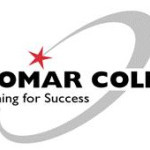- Industry: Education
- Number of terms: 12355
- Number of blossaries: 0
- Company Profile:
Founded in 1946, Palomar College is a public two-year community college in the city of San Marcos, located in north San Diego County, California. Palomar offers over 300 associate degree, certificate programs and is designated by the U.S. Department of Education as an Hispanic-Serving Institution ...
A wood or bone rod with a hook on one end that fit into a socket at the base of a spear. This device was used by the Cro-Magnon and other people with Upper Paleolithic technologies to push off spears. It increased the range and force of impact of projectiles by essentially increasing the length of the spear thrower's arm. The spear thrower is also known as an atlatl.
Industry:Anthropology
A visual message, or body language, used by primates and other animals primarily to communicate anger, fear, and other basic emotions. Displays are a strong indication of an animal's emotional state. See agonistic display.
Industry:Anthropology
A very short form of RNA in the nucleus of cells. Micro RNA molecules are typically only 20-25 base units long. They are transcribed from DNA, but are not involved directly in protein synthesis like other forms of RNA. They perform important functions similar to enzymes in regulating chemical reactions in our cells, especially in the embryonic stage at the beginning of life. It is thought that 1/3 or more of human genes are controlled in some way by micro RNA molecules. At least 200-255 human DNA genes code for the production of micro RNA molecules.
Industry:Anthropology
A very early form of archaic humans in Europe and North Africa that lived from about 800,000 to 200,000 years ago. In an alternate interpretation, some researchers consider Homo heidelbergensis to be a separate species or even a late advanced Homo erectus in transition to archaic humans. Homo heidelbergensis may have been the ancestor of the Neandertals.
Industry:Anthropology
A unit of inheritance usually occurring at a specific location, or loci, on a chromosome. Physically, a gene is a sequence of DNA bases that specify the order of amino acids in a protein or, in some cases, a small RNA molecule referred to as a microRNA. A gene may be made up of hundreds to thousands of DNA bases. Genes are responsible for hereditary characteristics.
Industry:Anthropology
A type of protein that causes or regulates specific chemical reactions within cells.
Industry:Anthropology
A type of blood cell that coagulates and clots blood when there is an injury to a blood vessel. Thrombocytes are also called platelets. See stem cells.
Industry:Anthropology
A type of nucleic acid that is found in both the nucleus and the cytoplasm of cells. Unlike DNA, RNA is single stranded. Messenger RNA (mRNA) carries the genetic code from the DNA in the chromosomes and translates it with the help of transfer RNA (tRNA) at the site of the ribosomes in the cytoplasm in order to assemble, or synthesize, proteins.
Industry:Anthropology
A tropical or subtropical grassy plains. Savannas are usually the habitat of larger herbivores and their predators. The first hominids apparently evolved on and near African savannas.
Industry:Anthropology
A type of aggressive skin cancer. Specifically, it is a cancer that begins in melanocytes and rapidly spreads to other parts of the body.
Industry:Anthropology
